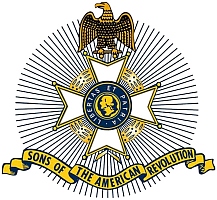Zachariah Landrum Story
Zachariah Landrum, a descendant of the “Comby Clan of Scotland,” was born in 1766 in Warren Co, Georgia. His given name was derived from his paternal grandmother’s Taliaferro family. He was a stocky-built, fair complexioned man with blue-gray eyes and long, sandy colored hair and beard. His rugged life necessitated thick buckskin pants with a long fringed jacket, a coonskin tailed cap, and hand made raw-hide half boots.
Zachariah felt duty-bound to fight for the expulsion of the British from Georgia, serving as a Private in the Revolutionary War. He was the third generation of Landrums fighting in the American Revolution. His father, Samuel, fought in South Carolina, while his grand-father, Thomas Sr, of Amherst, fought in the Virginia Continental State Line.
On July 13, 1784 Zachariah was issued bounty warrant #6 to land in Franklin County, Georgia. Tax Digests and land deeds show him in Wilkes County, on Rocky Comfort Branch of the Ogee Chee River and in Warren County, Neal’s District. In 1794, his land was in the path dividing Wilkes and Richmond County, Georgia.
About 1795, he married Letitia Tyne (b. 1776 in South Carolina; d. 1846). They had five children: Sarah (born 1798 in Georgia -- married Jeremiah Worsham); Catherine; John (born 1801 in Georgia -- married Martha Curry and Mary Wells); William (born 1804 in Tennessee -- married Nancy Gilmore); and Elizabeth (born 1810 in Alabama -- married John May Springer).
Zachariah and three brothers, John, William, and Joseph, brought their families and settled near St. Stephens, in Washington County, Mississippi Territory (now Clarke County, Alabama). Zachariah probably arrived prior to the other Landrums, since he signed a memorial to Congress on November 25, 1803 - about the time his brothers were applying for passes through the Creek Indian Nation. He lived and cultivated land on the west side of the Tombigbee River in 1803, and by 1805 had moved to the east side of the river in Washington County, Mississippi Territory, on Laura’s Creek, below the Choctaw boundary line. In 1813, Zachariah inherited 100 acres of his Wilkes County, Georgia home place in his grandfather, Thomas Landrum’s will. In 1819, Zachariah was in St. Stephen’s Meridian, Marengo County, Alabama.
On 16 June 1825, Zachariah deeded his two sons two slaves each in Marengo Co., Ala. Next, 20 November, 1829 he sold his Washington County, Alabama land and started his move toward his final resting place with a caravan of settlers, his two sons, and a daughter along with their families. Zachariah literally drove the first full-blooded Durham cattle to Coahuila and Texas. The caravan initially stopped at the Nacogdoches Old Stone Fort for protection from the Indians. Texas was under Mexican rule at the time, and Zachariah and his two sons petitioned the Mexican government for land grants. Zachariah Landrum, a devout Baptist, then had to listen to the Catholic Priest give him the required Catholic Oath to meet the Law Requirements so he would be ready to colonize. In 1831 the three Landrum men were each granted in excess of 4,000 acres each. Zachariah’s League was granted on ‘Bedie Creek’ near Iron Mound League, and near the “Town Creek” trading post.
The Landrums prospered in Texas, becoming leading citizens of the new republic. Zachariah’s sons and sons-in-laws fought against the Mexicans in Texas' fight for Independence from Mexico.
At the age of 67, Zachariah became ill. He became so weak that he signed his will with an “x.” He died on 19 Jul 1833 in what was then still Spanish America, and his earthly estate was disposed of by his will on 1 July, 1839. Zachariah was buried on his League, near his home two miles South of Town Creek Trading Post and one mile West on a scrub-treed hill called the “Landrum Springer Cemetery.” His wife, Letitia, covered his grave with a huge pink sandstone brick vault made by his slaves. The elements of weather and time brought the vault down to the ground to be covered with leaves and underbrush - the graves seemed lost!
In 1965, the Margaret Montgomery Chapter, TSDAR of Conroe diligently assisted Zachariah Landrum’s descendants in finding the grave. This was Zachariah’s last fight for American Heritage. His grave was marked with “Georgia Marbel” stone bearing a Christian Cross. The DAR placed bronze markers on Zachariah’s, Letitia’s, and daughter Catherine’s graves.
Zachariah Landrum is one of 46 known Revolutionary Soldiers found buried in Texas and is one of two (or three, depending on source) Revolutionary Soldiers who died and are buried in Montgomery County.
